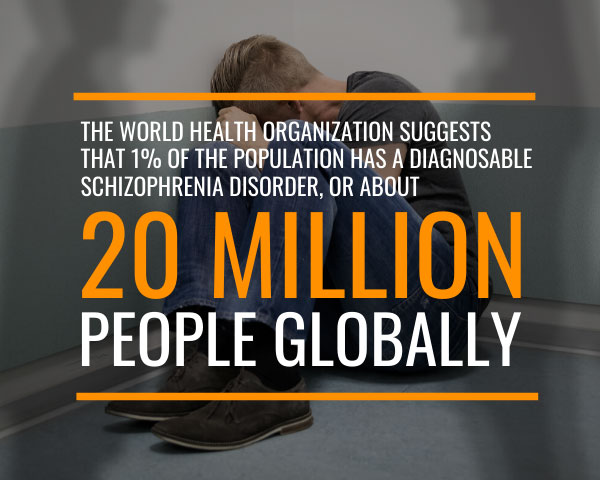
Schizophrenia is one of the most common mental health disorders. The World Health Organization suggests that 1% of the population has a diagnosable schizophrenia disorder, or about 20 million people globally. Schizophrenia is a serious mental illness, resulting in disability, losses in educational and occupational performance, discrimination, and reduced quality of life. For the millions of people who suffer from it, schizophrenia means distorted thinking, hallucinations, psychosis, delusions, and distorted perceptions of emotions, language, sense of self, and behavior.
If you or a loved one has been diagnosed with schizophrenia or think you may have a psychosis disorder such as schizophrenia, there is help. Most psychosis-related disorders are fully treatable, typically with a combination of behavioral therapy and medication.
Schizophrenia is a vastly complicated disorder, it comes in many forms, and it impacts people in different ways. Many people can also go months or even years without a flare-up of symptoms. And, symptoms can flare up to different intensities when they do. If you have schizophrenia, properly diagnosing and seeking treatment for schizophrenia is important for your quality of life, long-term health, and even life expectancy.
Common Symptoms of Schizophrenia
Schizophrenia is most commonly defined by psychosis, or distortions in thinking, perception, language, behavior, and sense of self.
While symptoms will vary from individual to individual, schizophrenia most commonly includes:
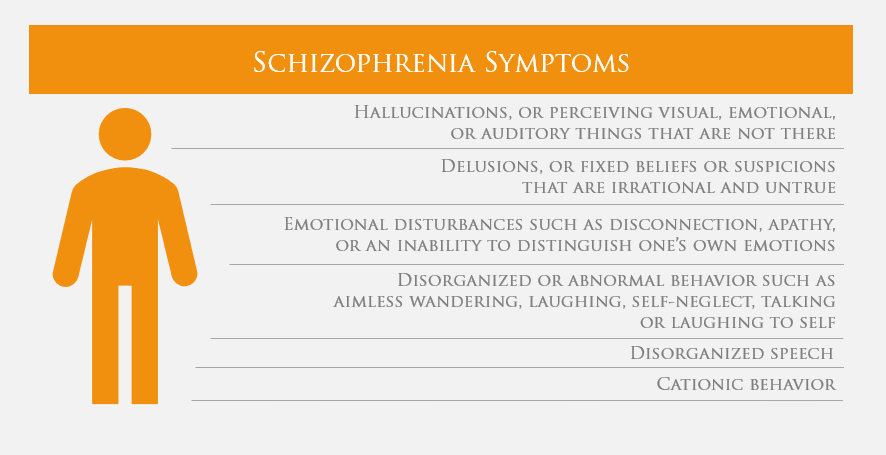
The Diagnostic and Statistical Manual of Mental Health Disorders, 5th Edition defines Schizophrenia as someone showing 2 or more of these symptoms for an extended period of time.
Types of Schizophrenic Disorder
While schizophrenia was previously divided into numerous subtypes such as paranoid, disorganized, catatonic, undifferentiated, and residual, the DSM-5 scraps these subtypes. The DSM-5 quotes limited diagnostic stability, low reliability, and poor validity, meaning that diagnostics changed from doctor to doctor, and depending on when the individual was diagnosed. The APA also removes schizophrenia subtypes. However, there are different types of schizoaffective disorders.
Subtypes have been dropped because treatment and diagnosis remain the same, regardless of subtype.
Diagnosing schizophrenia will involve a comprehensive physical exam including an MRI or CT scan to ensure that problems aren’t related to a physical problem. Some diagnostics will also incorporate screening for alcohol and drug use, although substance use disorders often overlap with schizophrenia.
Finally, a diagnosis will include a full psychiatric evaluation, discussing emotional state, mental state, history of emotional and mental state, history of family, personal medical history, potential for violence or suicide, and other factors as determined by the psychiatric or health professional.
Getting Treatment for Schizophrenia
Data shows that some 69% of persons with schizophrenia receive little or no treatment for it. Yet, schizophrenia is completely treatable, with most people receiving treatment seeing a major or complete abatement in symptoms.
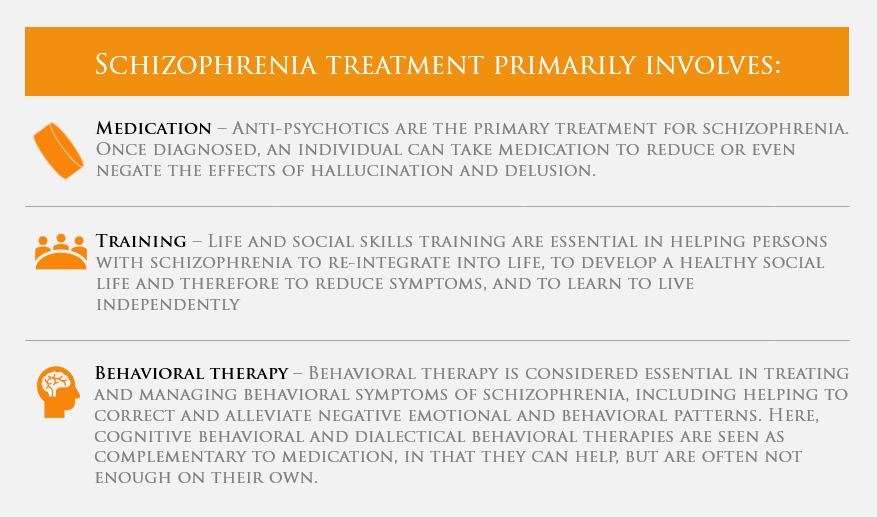
In most cases, someone diagnosed with schizophrenia should seek out medication first, followed by therapy and counseling to improve life and emotional regulation and management skills. These skills will, in turn, reduce the symptoms of schizophrenia exacerbated by loneliness and poor behavioral patterns, which will improve overall quality of life.
Medicine for Schizophrenia
Medication is a requirement for any schizophrenia treatment. These medications typically include one or more anti-psychotics, which will likely be trialed to create a prescription with the minimum quantity of drugs for the highest result. In most cases, doctors will prescribe second-generation anti-psychotics, which offer a lower side-effect profile. Even so, some schizophrenia medications can have severe side effects.

- Aripiprazole
- Asenapine
- Brexpiprazole
- Cariprazine
- Clozapine
- Iloperidone
- Lurasidone
- Olanzapine
- Paliperidone
- Quetiapine
- Risperidone
In some cases, your doctor may prescribe a first-generation anti-psychotic, especially if second generation drugs have been proven not to work. These include, Chlorpromazine, Fluphenazine Haloperidol, and Perphenazine. Most second-generation drugs are available as a pill or injection. Doctors will prefer the injection, which is given every 2-4 weeks, for patients who resist medication or are at-risk for not taking pills.
Therapy for Schizophrenia
Cognitive therapy and psychological interventions are recommended as the second step for schizophrenia treatment, to be undertaken after medication takes effect and psychosis recedes. This is because persons suffering from hallucinations and delusions are poor recipients of therapy of any kind. Therapy treatments for schizophrenia typically include:
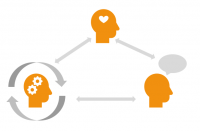 Behavioral Therapy – Cognitive behavioral therapy, dialectical behavioral therapy, motivational therapy, and others are used to offer individualized therapy to help individuals normalize behavior and thought patterns. Behavioral therapy offers tools for coping with stress, identifying relapse signals, and managing the symptoms of schizophrenia during daily life.
Behavioral Therapy – Cognitive behavioral therapy, dialectical behavioral therapy, motivational therapy, and others are used to offer individualized therapy to help individuals normalize behavior and thought patterns. Behavioral therapy offers tools for coping with stress, identifying relapse signals, and managing the symptoms of schizophrenia during daily life.
 Counseling and Training – Persons with schizophrenia benefit from receiving training relating to social skills, improving interactions, and improving skills such as managing emotions, coping mechanisms, and life skills.
Counseling and Training – Persons with schizophrenia benefit from receiving training relating to social skills, improving interactions, and improving skills such as managing emotions, coping mechanisms, and life skills.
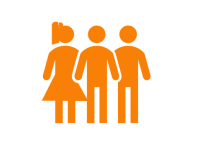 Family Therapy – Schizophrenia may inhibit and harm relationships with friends and family. Offering family and relationship therapy can help individuals to rebuild these relationships, while giving family members the tools to deal with schizophrenia.
Family Therapy – Schizophrenia may inhibit and harm relationships with friends and family. Offering family and relationship therapy can help individuals to rebuild these relationships, while giving family members the tools to deal with schizophrenia.

Vocational Rehabilitation – In some cases, individuals may need vocational rehabilitation to prepare for, find, and keep jobs.
Schizophrenia Treatment Centers
Schizophrenia treatment is offered on an inpatient (residential) and outpatient basis, where individuals can take 60-90-day (or longer) programs offering behavioral therapy, counseling, individual therapy, and complimentary therapies like life skills training, relationship and emotional management training, physical therapy, and others.
Schizophrenia is an ongoing chronic mental illness and it will affect you for the rest of your life.
Taking medication is the first step to treatment, but long-term, therapy, counseling, and ongoing care are necessary to improve your state of mind and your quality of life. Most people need both to truly manage schizophrenia.